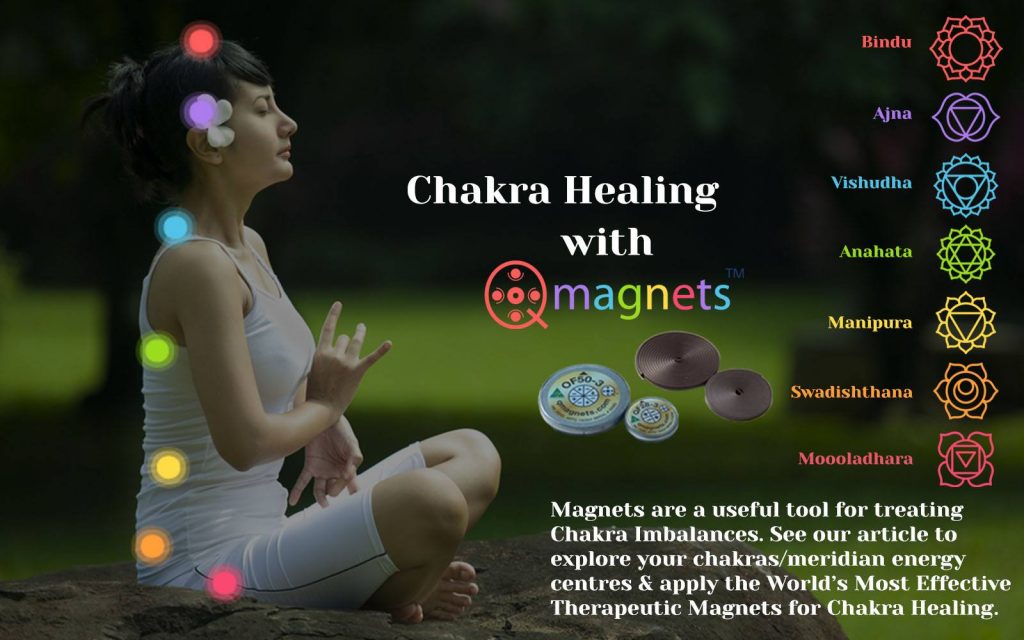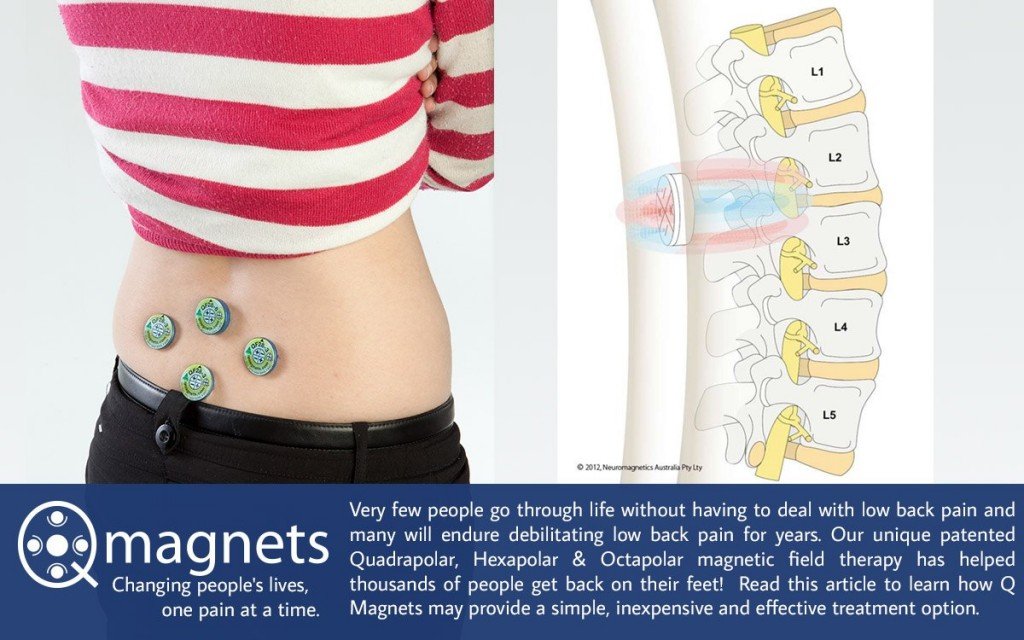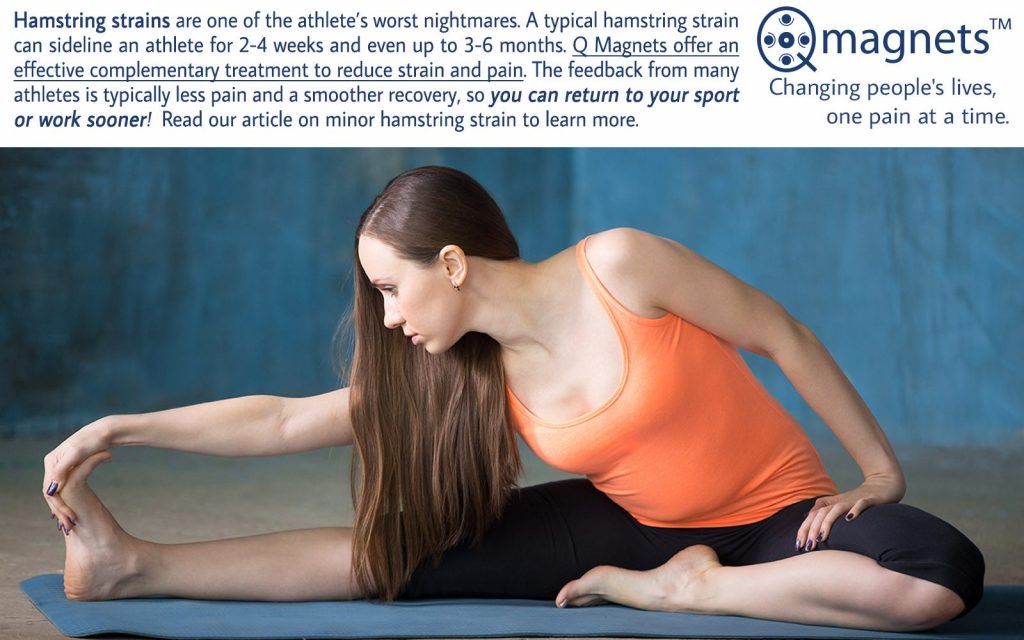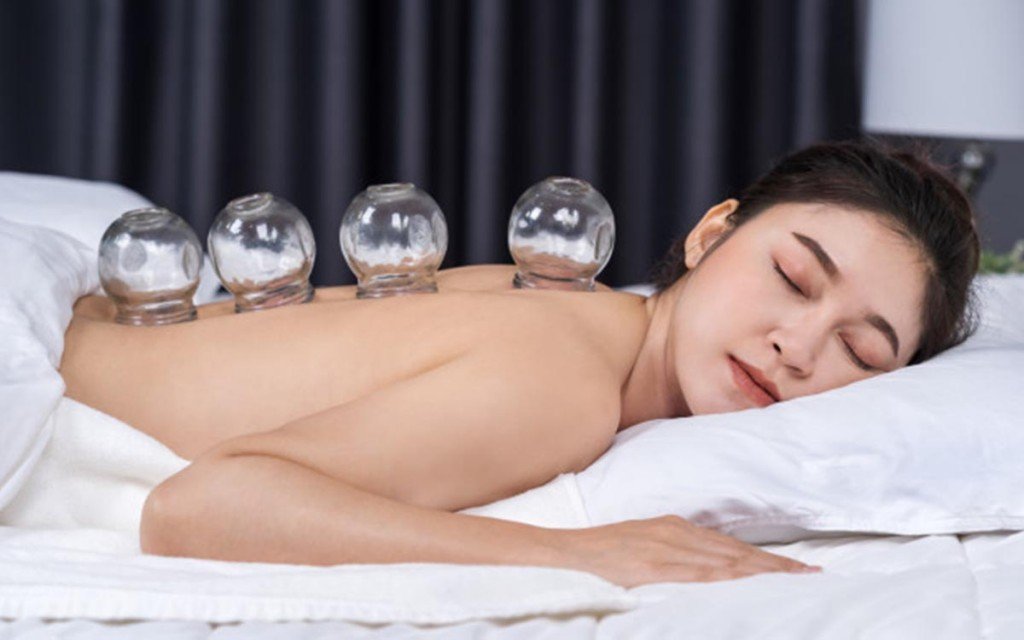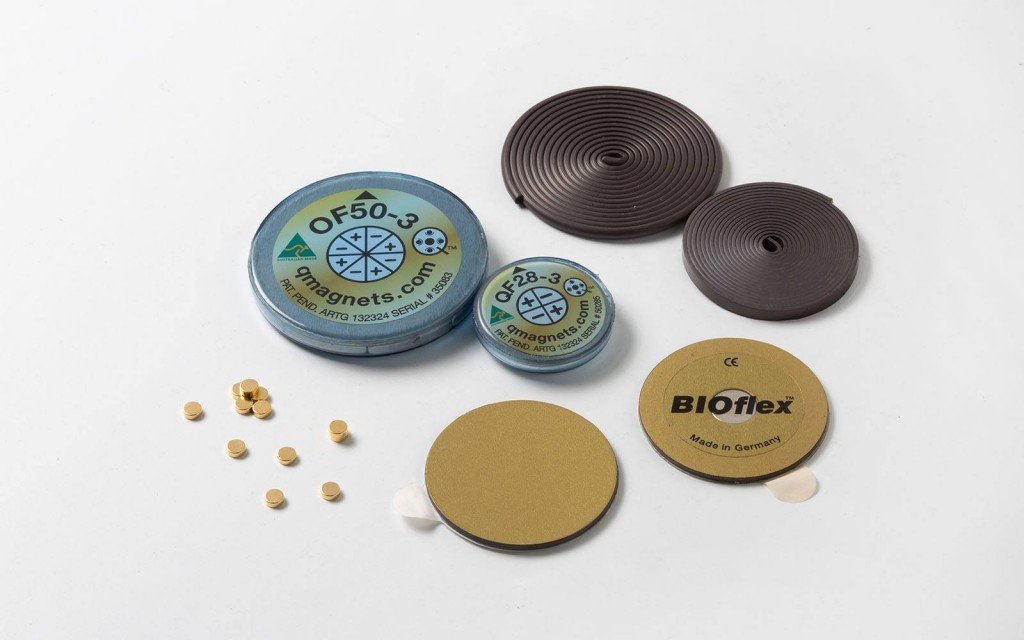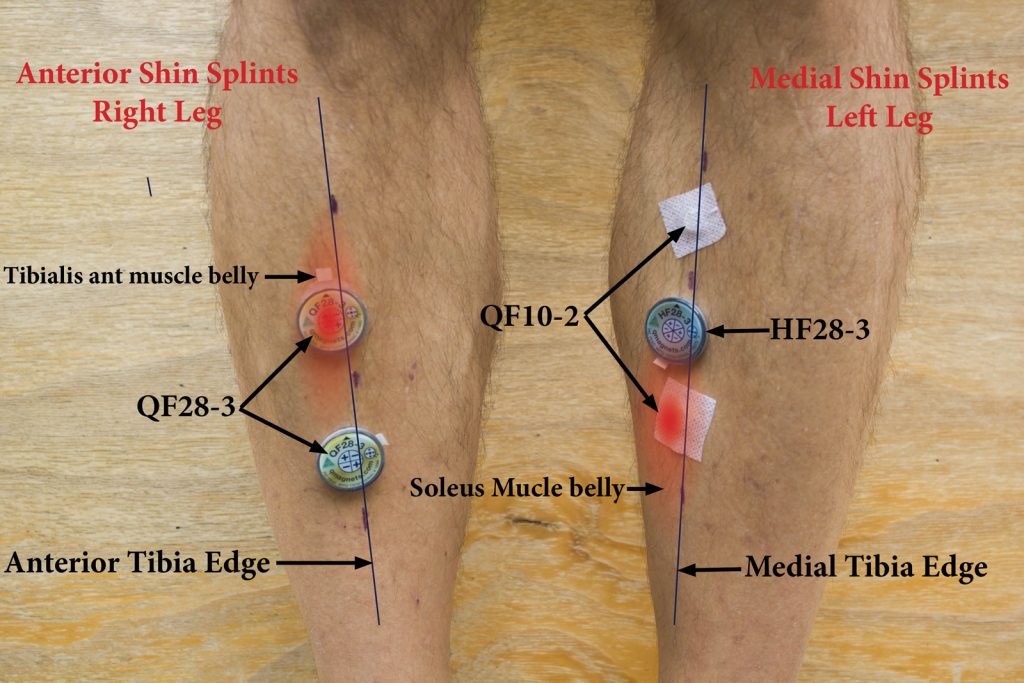How to use Q Magnets
Q Magnets are a medical device intended to produce a mixed (positive and negative) magnetic flux field over a superficial body site to potentially provide comfort or localized temporary relief of minor aches and pains (e.g., from muscle soreness/stiffness, arthritis etc.).
Neither the information on this website or the technology is intended to be a substitute for any medical treatment that is recommended or prescribed by your doctor or health care professional.
Application of Q Magnets
The Q Magnets are typically applied directly to the skin with adhesive tape or stickers. Other means of attachment such as braces or wraps can also be used albeit at the loss of placement accuracy.
It is important to get the right dose of magnetic field to the target tissue, otherwise there will be little or no effect. This may require using the information supplied with your order and on this website with a bit of trial and error to achieve the optimal placement. The best results are usually achieved by seeing an appropriately trained health professional such as a doctor or physiotherapist using their own clinical reasoning and knowledge of neural anatomy to find the most effective placements.
Beginners can use the placements which were developed by neurologists, physiotherapists and acupuncturists over many years from the treatment of thousands of patients. These placements should provide the positive results in over 50% of cases, but you may require slight variations in placement which can be assessed through trial and error and/or by seeing an experienced health professional.
Q Magnets Basics
- The magnet should be facing the skin so that the printed label is visible on top. Just under the label is the flux plate which acts as a shield to direct the magnetic field deeper into the body.
- The orientation arrow is just above the model number and when applied, should always point up towards the head of the user. Try to get the nerve under the therapeutically active part of the magnet, i.e. the narrow band at the interpole boundaries as seen with the magnetic viewing film.
- With multiple devices, keep them separated by the width of the device or at least up to 2 cm apart.
Please see our FAQs for more information on Q Magnets application and frequent questions about product usage and maintainence.
The Trigger Point Locator is a useful tool in identifying areas of sensitive nerve activity that can be accurately targeted with Q Magnets therapy.
The Q Blankets can be used as magnetic mattress pads. I.e., one can lie on top of them or use as a blanket. The Q Blankets are convenient as they are light in weight and can be easily moved around in the bed while sleeping and also add to the comfort.
Method to glue Q Magnets inside braces.
Which Device Do I Use?
As with any task, you need the right tool for the job. Q Magnets can be a great friend, but with 20+ models it helps to know a little about each one to find out who’s your best friend. See the Q Magnets products page for a description of each device, including the sizes and penetration depths.
Use the Body Map to know the basic magnets for different areas.
The overriding principle of device selection is to choose a Q Magnets model that is large enough and its field penetrates deep enough to envelope the target tissue. See our device selection guide to learn how the size, width and number of poles affect the field penetration.
- Smallest devices (QF10-2 & Q6-1.5) are the best fit for the smallest joints, such as fingers and acupuncture and trigger points.
- Medium sized devices (QF20-3) are the best fit for medium sized joints such the elbow and ankle.
- The largest devices (QF28-3 & OF50-3) are the best fit for the larger joints such as the knee, shoulder, hip, lower back and sacroiliac joint.
The most commonly used devices are the QF28-3 and QF20-3 which is why they are packaged in the General Use Bonus Set.
As a general rule, the larger devices such as the QF28-6 and QF28-3 should be used centrally over the spine and over the larger deeper nerves such as the sciatic nerve.
The smaller Q Magnets such as the QF20-3 and QF15-2 should be used peripherally over areas such as the elbow and wrist and the smallest models QF10-2, Q6-1.5 used on trigger points. With each pain episode, you may require a larger Q Magnet and as the pain diminishes substitute with a smaller device to maintain your pain free state.
The smaller devices such as the QF20-2 have a lower profile, hence may be more comfortable for daily use. The Q6-1.5 is very small and only requires a small round plaster to apply it to the body, hence it is very comfortable and inconspicuous to wear, but has a shallow penetration and a very small active surface area and is unlikely to be effective over the lower back or neck or the larger joints such as the hip, knee, shoulder, ankle and elbow where the biggest devices are required.
The largest Q Magnet, the OF50-3 has the advantage of covering a larger active surface area (the active surface area of the Q Magnet is the boundary line between the alternating poles, this is where the magnetic field gradient is at its steepest) and penetrates to around 35 mm or 1.4 inches. Whereas the QF28-6 and QF28-3 models cannot cover two adjacent spinal levels such as L4/5 and L5/S1 since they have to be separated by an inch or 2.5 cm, the OF50-3 can cover two adjacent levels which can make all the difference if required.
Where To Place Q Magnets?
Use the Body Map to follow the basic placements.
For long term pain, you may need to follow the dermatomes and place a Q Magnet centrally over the appropriate spinal segments. See the page on Dermatomes and Central Sensitization to better understand the mechanisms of pain and Q Magnet application.
See articles on training and protocols further down this page to find even more ideas, case studies and protocols on Q Magnets placements. We’re truly thankful to acupuncturists and experts such as Dr. Niemtzow who in this case found a new placement for knee pain which is not a standard placement and one that we would not have recommended, or even thought of!
How Long should you continue to Wear your Q Magnets?
A simple answer is as long they continue to work and when the pain returns if they are removed.
If you have had the pain for many months or years, they might need to be worn on an off for many months until you gradually wean off.
For recent minor aches and pains, simply keep them on until they are no longer required which may be a matter of days.
Body Map – Where is Your Pain?
Learn to apply Q Magnets for pain relief based on area of pain. Use the body map or the links to learn more about Q magnets selection, placement ideas, case studies, and reviews for local application to reduce pain.
More Articles on Applying Q Magnets – Training & Protocols
Listed below is our ever-growing collection of discussions on Q Magnets application and pain treatment protocols based on acupuncture and physiotherapy research.
If you are a professional practioner, we hope you find these articles useful and we are always eager to hear your feedback. Please feel free to write to us if you have any questions or would like to contribute to our blog or collaborate with us on research.
Access our Research Section to see the scientific evidence in form of case studies and clinical trials for the use of magnetic field therapy for abdominal & genital pain, cervical headaches, whiplash, wrist fracture, trigger point pain, post operative pain, chronic low back pain & more!
Combining TENS and Q Magnets
TENS machines are thought to work by activating the fast-conducting myelinated nerves, such as A-Beta fibres and closing the Pain-Gate. Whereas Q magnets...
The role of sympathetic nervous system in chronic pain and Q Magnet therapy application
The SNS can play a major role in sustaining chronic pain, particularly in the case of Complex Regional Pain Syndrome (CPRS). Learn how Q Magnets can be applied for therapeutic effects on pain modulation and reducing sympathetic overload.
Dr Goiz Biomagnetic Pairing and Q Magnets
According to Dr Goiz, the biomagnetic pairing technique involves using pairs of bipolar magnets to balance pH, improve the immune system and overcome disease. Studies that show positive benefits for pain relief are achieved when multipolar magnets such as Q Magnets are specifically placed on areas such as trigger points and nerve connections. Read this article to learn more!
Chronic Overlapping Pain Conditions (COPC) & Magnetic Field Therapy
Learn about mechanism of COPC and see how magnetic field therapy can be utilized to effectively provide relief from COPC. Chronic overlapping pain conditions include fibromyalgia, endometriosis, chronic migraine, temporo-mandibular disorders, chronic low-back pain, irritable bowel syndrome, interstitial cystitis, vulvodynia and chronic tension-type headache.
Chakra Healing with Magnet Therapy
Discover your chakras and learn how magnet therapy can be applied for chakra healing or chakra balancing.
Dermatomes – How dermatomes affect Q Magnet application for treating chronic and persistent pain
Dermatome map helps identify the most effective Q Magnet placements for people suffering more long term and complex pain.
Magnetic Field Therapy for Low Back Pain
Very few people go through life without having to deal with low back pain and many will endure debilitating low back pain for years. Our unique patented Quadrapolar, Hexapolar & Octapolar magnetic field therapy has helped thousands of people get back on their feet! Read this article to learn how Q Magnets may provide a simple, inexpensive and effective treatment option.
Using Q Magnets to Help Recover from Minor Hamstring Strain
Hamstring strains are one of the athlete’s worst nightmares. A typical hamstring strain can sideline an athlete for 2-4 weeks and even up to 3-6 months. In...
Attaching Q Magnets using Braces, Supports and Wraps
Q Magnets are often attached with sports tape, but some people with sensitive or hairy skin or just for convenience sake, may prefer a type of brace....
Cupping with Q Magnet Application Case Study
Cupping is applied by suction within a "cup" on the surface of the skin. An after effect is the stagnation of blood, which can persist for a few weeks...
Why the orientation arrow?
Each Q Magnet has a black orientation arrow (or triangle) just above the model number. It's important when applying your Q Magnets that the arrow is...
Magnetic Therapy Contraindications
For most people, the exposure to static magnetic fields is considered very safe. Probably the most serious risk is for those who have a pacemaker. In fact,...
With Magnetic Therapy – Is Bigger Always Better? Is Stronger Always Superior?
Using a big hammer to tap in a small tack is not the best tool for the job, so too the biggest and strongest magnet is not always the best option for pain...
Device Selection – Which magnet to use? Quadrapolar, Hexapolar, Octapolar or Concentric
Rationale for Q magnets device selection for various pain conditions and body parts.
How long do I need to wear Q Magnets before they begin to work?
Response times will vary depending on the condition being treated. The main theories for how Q Magnets work are… Dampening down over active nerves...
Using Q Magnets and magnetic field therapy for heel pain (minor plantar surface foot pain)…
Plantar surface foot pain (not to be confused with heel spurs) is a common complaint from many an athlete, both young and old. Pain can be caused by...
How to separate strong Q Magnets
It can almost seem impossible to get the larger Q Magnets apart, unless you have the right technique. The larger Q Magnets are needed to get the extra...
Using Q Magnets over Acupuncture Points for Relief from Nausea & Better Sleep
The P6 acupuncture point is often stimulated to assist with better sleep and provide relief from nausea. Acupuncture points have been shown to respond to...
Caution Around Magnetic Fields Near Computers and Sensitive Electronic Equipment…
Q Magnets are a rare earth neodymium magnet and one of the strongest static magnets known. The magnetic field produced by even the larger Q Magnets...
Pain Relief From Minor Aches and Pains and Getting Back to Your Sport Sooner…
Injuries are the inevitable consequence of athletes pushing their bodies to breaking point. One of the easiest forms of pain relief is popping a pill and...
Treatment for low back pain if it may have originated with an epidural
Epidurals are a safe and common form of pain relief during labour. During the epidural, a needle is used to puncture the dura and make way for a catheter...
Small magnets being withdrawn from sale, what about Q Magnets?
The dangers of children swallowing small magnets are coming into focus and for good reason. Canada recently came out with such an announcement. At...
Is a 42% improvement in symptoms too much to ask?
Clinically important interventions are those whose effects are large enough to make the associated costs, inconveniences, effort and harms worthwhile. Dr...
Variations in magnetic field therapy…What to do for best results:
We have already covered why specificity is critical when using neuromagnetics. But, what are the variables in the application of magnetic therapy...
How to use Q Magnet therapy for minor shin soreness?
The pain of shin soreness is typically caused by inflammation in the muscles and/or fascia and sometimes mistaken for tibia stress fracture. Placing Q...
Got Q Magnets ?
Since 2009, Q Magnets have led the way with the world’s most effective magnetic therapy devices. We provide a 30-day satisfaction guarantee and deliver worldwide.
We are dedicated to support our products with sound advice from experienced health professionals to achieve the best results!






